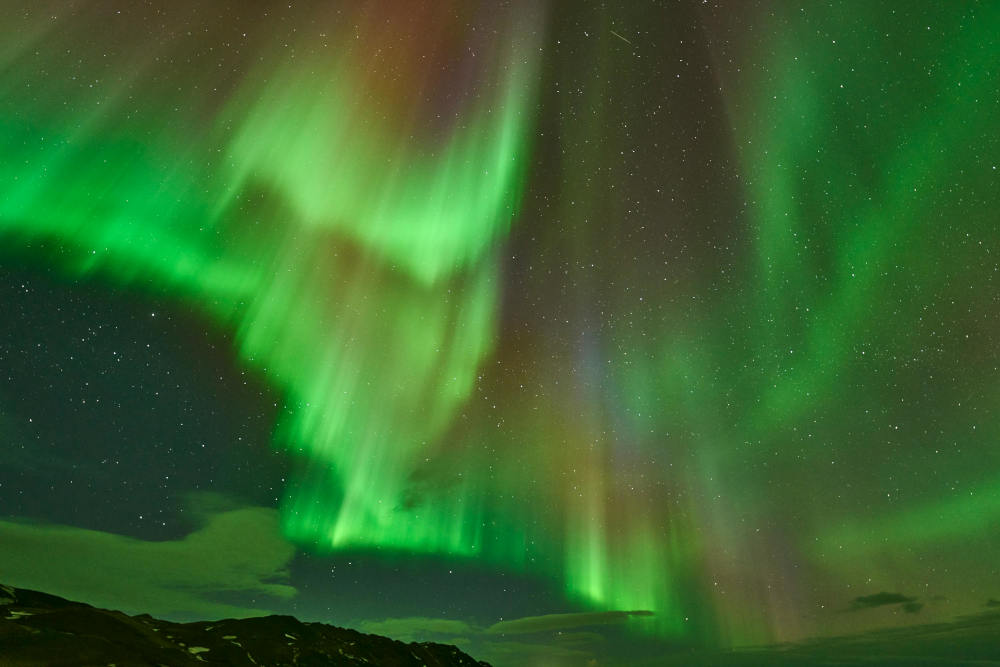
The universe is vast beyond comprehension. But just when you think you've wrapped your head around how big the universe is, you hear terms like multiverse, omniverse, and even megaverse — words that push the boundaries of imagination. So, naturally, people start to ask: What could possibly be bigger than the omniverse? And how does something so massive compare to something as tiny as Earth?
Let’s explore this mind-expanding concept and dive into what lies beyond the omniverse — at least in theory.
Panaprium est indépendant et pris en charge par les lecteurs. Si vous achetez quelque chose via notre lien, nous pouvons gagner une commission. Si vous le pouvez, veuillez nous soutenir sur une base mensuelle. La mise en place prend moins d'une minute et vous aurez un impact important chaque mois. Merci!
Defining the Concepts: Universe, Multiverse, and Omniverse
Before we can go bigger, we have to understand what we're building upon.
1. The Universe
Our universe is everything we can observe: galaxies, stars, black holes, planets, and all forms of matter and energy. It's governed by physical laws like gravity and relativity. Based on current science, the observable universe spans about 93 billion light-years in diameter.
2. The Multiverse
The multiverse is a theoretical collection of multiple universes, including our own. These universes could exist in different dimensions, with different physical laws or constants. The multiverse idea emerges from string theory, quantum mechanics, and inflation theory. There are various models, like:
-
Bubble universes (eternal inflation)
-
Quantum many-worlds
-
Brane multiverse (from M-theory)
3. The Omniverse
The omniverse includes every possible universe, multiverse, dimension, timeline, and reality — everything that could ever exist, across every possibility. It's the absolute totality of existence — at least, as far as our imagination stretches.
So… what could possibly be bigger than the omniverse?
What Could Be Bigger Than the Omniverse?
Here’s where we step out of known physics and into the realm of philosophy, metaphysics, and speculative theory.
1. The Infiniverse (Infinite Omniverse)
Some thinkers use the term infiniverse to describe an endless collection of omniverses. If each omniverse includes all possible realities, the infiniverse might include all impossible ones too — realms beyond logic, reason, and physical law.
While the omniverse might be considered the "set of all that exists," the infiniverse is the set of all sets, even those that contradict our understanding of existence.
This concept is rarely used in scientific discourse, but it's popular in high-concept fiction and metaphysical speculation.
2. The Transcendent Realm (Outside of Existence)
Some philosophies propose that there is something outside all existence. In religious or spiritual systems, this could be:
-
The Source
-
The Absolute
-
The Creator
-
God-consciousness
This is not a thing in the way a universe is. It is often described as beyond space, time, thought, and even existence itself. From this view, the omniverse is simply a layer within a much vaster, more abstract system.
3. Mathematical and Abstract Realms
Mathematicians might say that all possible realities can be represented as mathematical structures. According to Max Tegmark's Mathematical Universe Hypothesis, reality is not just described by mathematics — it is mathematics.
So beyond the omniverse could be the realm of all mathematical structures, including those that cannot be instantiated in any physical or metaphysical reality.
Compared to Earth: Putting It in Perspective
Now, let’s bring this back to something familiar — our home planet, Earth.
Earth’s Size
-
Diameter: ~12,742 km (~7,918 miles)
-
Circumference: ~40,075 km
-
Mass: ~5.972 × 10²⁴ kg
Compared to the universe, Earth is already microscopic. To scale:
-
If the solar system were the size of a coin, Earth would be invisible.
-
If the Milky Way were a football field, Earth wouldn’t even be a grain of dust.
-
The observable universe contains an estimated 2 trillion galaxies, each with billions of stars — and Earth is a speck orbiting one star among hundreds of billions.
Earth vs Omniverse
The omniverse includes countless universes, many of which might not follow the same laws of physics, time, or even logic.
Comparing Earth to the omniverse is like comparing a single atom to a theoretical infinity — it’s not just small, it’s inconceivably small. If the omniverse is infinite, Earth doesn’t even register as a measurable entity.
And if there’s something even bigger than the omniverse — like the infiniverse or the transcendental source — then Earth is not even a pixel in the grand picture.
Why Does This Matter?
At first, this might feel unsettling. Thinking about how tiny Earth is — how small we are — can make us feel insignificant. But it can also shift our perspective in powerful ways.
1. Humility
Understanding our size relative to the cosmos helps dissolve ego. We're a small part of something vast, interconnected, and mysterious.
2. Wonder and Curiosity
The unknown stimulates our desire to explore, learn, and imagine. Concepts like the omniverse or infiniverse invite new ideas and inspire both science and art.
3. Spiritual Insight
Some spiritual traditions teach that even though we are small, we are also connected to the greater whole — like a drop of water that contains the ocean within it. Our consciousness may be limited, but it's capable of touching something infinite.
Is There Any Scientific Evidence for Realms Beyond the Universe?
Current science cannot confirm anything beyond the observable universe — let alone a multiverse or omniverse. However, several theories support the possibility:
-
Cosmic Inflation Theory suggests that inflation never stopped, and other “bubble universes” may exist beyond our cosmic horizon.
-
Quantum Mechanics (the many-worlds interpretation) suggests that every possible outcome of every decision exists in its own universe.
-
String Theory and M-Theory open the door to multiple dimensions and brane-worlds, potentially leading to multiverse models.
But these are theoretical, and currently untestable. Concepts beyond the omniverse — like the infiniverse or transcendental realms — are even more speculative and often philosophical or spiritual in nature.
Exploring It in Fiction
Popular culture loves to explore these “beyond infinity” concepts:
-
Marvel Comics and the DC Universe use terms like multiverse, omniverse, and beyond to describe infinite realities.
-
Rick and Morty plays with the idea of infinite dimensions and alternate versions of self.
-
Doctor Strange: Multiverse of Madness introduces chaotic realities coexisting with ours.
-
The Matrix and Inception hint at layered realities, dream worlds, and simulated existences.
These fictional stories are powerful tools to help us wrap our heads around impossible ideas — and they often reflect deeper philosophical questions.
Final Thoughts
So, what’s bigger than the omniverse compared to Earth?
From a size perspective, anything “bigger” than the omniverse is beyond anything we can measure — potentially infinite or abstract, like the infiniverse or a transcendent realm beyond space and time.
And compared to Earth, these concepts make our world — and even our universe — look like a speck of dust floating in a boundless sea of possibilities.
Yet somehow, this makes Earth more precious. Amid all the infinite theories and vast dimensions, this is where we live. This is where we love, learn, and wonder. Earth may be small, but it’s deeply meaningful.
In the end, maybe it’s not the size of Earth that matters — but our capacity to imagine and explore, to question and connect. That, more than anything, makes us part of the infinite mystery.
Cet article vous a-t-il été utile ? S'il vous plaît dites-nous ce que vous avez aimé ou n'avez pas aimé dans les commentaires ci-dessous.
About the Author: Alex Assoune
Contre Quoi Nous Luttons
Les groupes multinationaux surproduisent des produits bon marché dans les pays les plus pauvres.
Des usines de production où les conditions s’apparentent à celles d’ateliers clandestins et qui sous-payent les travailleurs.
Des conglomérats médiatiques faisant la promotion de produits non éthiques et non durables.
De mauvais acteurs encourageant la surconsommation par un comportement inconscient.
- - - -
Heureusement, nous avons nos supporters, dont vous.
Panaprium est financé par des lecteurs comme vous qui souhaitent nous rejoindre dans notre mission visant à rendre le monde entièrement respectueux de l'environnement.
Si vous le pouvez, veuillez nous soutenir sur une base mensuelle. Cela prend moins d'une minute et vous aurez un impact important chaque mois. Merci.































0 commentaires